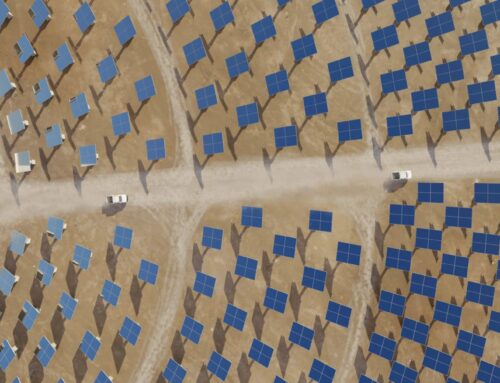Copper Market Size and Forecast 2025–2033: Global Demand Surges on Infrastructure, Electri
November 28, 2025
The global Copper Market is expected to reach 34.71 million tons by 2033, rising from 24.22 million tons in 2024, and growing at a CAGR of 4.08% between 2025 and 2033, according to Renub Research. As one of the world’s most strategically important industrial metals, copper continues to stand at the center of global electrification, urbanization, and technological advancement. Its unmatched electrical and thermal conductivity, durability, and versatility make it indispensable across virtually every modern industry—from construction and power transmission to consumer electronics and next-generation transportation.
As nations accelerate investments in renewable energy, expand smart grids, and push toward electric vehicle (EV) adoption, copper has emerged as a critical building block of sustainable industrial growth. Despite challenges such as price volatility, geopolitical risk, and environmental concerns associated with mining, the world’s appetite for copper is far from slowing. Instead, soaring demand across new-age sectors suggests that copper will remain one of the most significant commodities shaping global economic transformation through 2033.
Copper Industry Overview
The copper industry is witnessing robust expansion, underpinned by its foundational role in electrical, construction, and industrial applications. With exceptional conductivity and corrosion resistance, copper is essential for wiring systems, power generation, motors, electronics, plumbing, and heat exchangers. Infrastructure growth across emerging markets—particularly in Asia, Latin America, and Africa—is accelerating copper consumption, with rapid urbanization requiring extensive networks of electrical grids, telecommunications, and modern housing.
Technological advancements and the global shift toward clean energy and electrified mobility further strengthen copper’s position. Renewable energy installations—wind farms, hydropower systems, and solar arrays—require large volumes of copper for turbines, inverters, cabling, and transmission systems. EVs, meanwhile, use almost four times more copper than traditional combustion-engine vehicles, spanning batteries, power electronics, charging infrastructure, and motors.
The expanding consumer electronics industry also boosts copper demand. Smartphones, laptops, circuit boards, semiconductors, and data servers all rely on high-conductivity copper materials. Combined with manufacturing automation and industrial modernization, these sectors reinforce copper’s ubiquity in the global economy.
Yet, the industry faces hurdles. Environmental regulations, rising energy costs, mine depletion, and geopolitical tensions complicate copper production. Mining remains resource-intensive and environmentally demanding, prompting calls for sustainability and responsible sourcing. Supply chain disruptions, especially concentrated in countries like Chile, Peru, and the Democratic Republic of Congo (DRC), can influence prices and global availability.
Nevertheless, electrification trends and renewable energy commitments ensure that copper remains a long-term growth market, providing steady opportunities for producers, refiners, distributors, and investors.
Key Factors Driving Copper Market Growth
1. Rising Demand in Electrical and Electronics Applications
Copper is the backbone of the global electrical and electronics industry. Its superior conductivity and reliability make it indispensable for:
Electrical wiring
Circuit boards and semiconductors
Motors, transformers, and generators
Data centers and telecom networks
Consumer electronics and household appliances
As the digital economy expands, copper consumption continues to rise. The global proliferation of 5G networks, smart devices, cloud infrastructure, and artificial intelligence–driven systems requires millions of tons of high-grade copper wiring and components.
Electric vehicles amplify this demand—each EV requires between 80 and 100 kg of copper, compared to approximately 20–25 kg for conventional vehicles. EV charging stations and grid upgrades further multiply copper usage.
Similarly, renewable energy infrastructure is highly copper-intensive:
Wind turbines require up to 8 tons of copper per megawatt.
Solar farms require extensive copper wiring for inverters and grids.
Energy storage and battery systems depend heavily on copper for thermal and electrical management.
The global push toward electrification ensures copper’s position as an irreplaceable resource.
2. Infrastructure Development & Urbanization
Copper demand is surging due to massive investments in infrastructure and urban development. Its applications span:
Residential and commercial construction
HVAC systems
Plumbing and piping
Power distribution networks
Railway electrification
Smart city infrastructure
Governments worldwide are pouring billions into smart cities, metro systems, renewable power plants, and digital connectivity—all of which heavily depend on copper.
Emerging economies like India, Indonesia, Vietnam, and Brazil are accelerating urbanization, increasing the need for copper-intensive building materials, housing projects, and industrial facilities. Developed regions, including the U.S. and Europe, are simultaneously upgrading aging electrical grids and transportation networks.
Infrastructure development remains one of the most powerful and sustained drivers of global copper consumption.
3. Growth in Renewable Energy and Electric Vehicles
The global energy transition is a defining force in copper market growth. Clean energy systems require far more copper than traditional fossil fuel–based power plants due to their decentralized and high-conduction requirements.
Key contributors include:
Electric Vehicles (EVs)
EVs use up to 4x more copper than ICE vehicles.
Charging stations demand extensive copper cabling.
Batteries and electric motors are copper-intensive.
Solar Energy
Solar photovoltaic farms require copper wiring in panels and inverters.
New installations, particularly in China, India, and the U.S., continue to drive demand.
Wind Power
Offshore wind farms require the highest copper usage per megawatt of any renewable energy technology.
Turbines, nacelles, and grid connections heavily depend on copper materials.
Power Transmission & Smart Grids
As countries upgrade electrical grids to support renewable energy integration, demand for copper wiring and transformers increases dramatically.
This shift toward sustainable energy positions copper as one of the most vital metals for climate goals and carbon-neutral strategies.
Challenges in the Copper Market
1. Price Volatility and Supply Constraints
Copper prices are notoriously volatile, influenced by:
Global supply-demand fluctuations
Geopolitical tension in mining regions
Labor strikes and operational shutdowns
Energy shortages affecting mine operations
Transportation bottlenecks and trade restrictions
Major producers—Chile, Peru, China, Congo, and the U.S.—face periodic disruptions that can significantly influence global supply. High production costs and declining ore grades worsen supply constraints.
Because copper is a core input for construction and manufacturing, price instability directly impacts project feasibility and corporate margins across multiple sectors.
2. Environmental and Regulatory Challenges
Copper extraction and processing come with environmental consequences:
Water contamination
Greenhouse gas emissions
Land degradation
High energy consumption
Governments and communities are increasingly enforcing stricter environmental regulations, pushing mining companies toward cleaner technologies and sustainable practices. While necessary, such regulations raise operational costs and can delay expansion projects.
Balancing global copper demand with environmental responsibility remains one of the industry’s biggest challenges.
Copper Market Overview by Region
United States
The U.S. copper market is driven by:
Construction and housing
Electrical infrastructure modernization
EV adoption
Renewable energy project development
Advanced manufacturing and aerospace sectors
Government incentives for clean energy and EV adoption amplify copper consumption. Strong recycling capabilities also support supply stability. The U.S. remains one of the most strategically important copper markets worldwide.
United Kingdom
The UK copper market is expanding amid:
Smart city developments
Upgrades to electrical grids and communications
Growth in EV infrastructure
Sustainable building initiatives
The UK’s emphasis on low-carbon technologies and energy efficiency boosts demand for copper-intensive systems. While price volatility poses challenges, strong technological innovation supports steady market growth.
China
China is the world’s largest copper consumer, driven by:
Rapid urbanization
Industrial expansion
EV dominance
Electronics manufacturing
Mega-infrastructure projects
Smart cities, renewable energy installations, and domestic EV production significantly boost copper usage. Despite supply-demand imbalances and pricing challenges, China remains the global epicenter of copper consumption and production.
United Arab Emirates
The UAE copper market grows due to:
Ongoing megaprojects
Smart buildings and advanced construction
Infrastructure upgrades
Renewable energy expansion, especially solar
Diversifying industrial sectors
Sustainability-focused government policies and the region’s shift toward energy-efficient construction further propel copper usage.
Recent Developments in the Copper Industry
Adani Enterprises (India) is set to launch the world’s largest copper smelter by April 2025, boosting India’s domestic copper production capacity and strengthening its global position.
Prysmian (Italy) signed a long-term agreement in April 2024 with Aurubis, Europe’s leading copper recycler and wire rod producer, ensuring a steady supply of copper wire rods for future expansion across Prysmian’s European operations.
Market Segmentations
By Type
Primary Copper
Secondary Copper
By Product
Wire
Rods, Bars & Sections
Flat Rolled Products
Tube
Foil
By End Use
Industrial Equipment
Transport
Infrastructure
Building & Construction
Consumer & General Products
Others
By Region
North America: U.S., Canada
Europe: France, Germany, Italy, Spain, U.K., Belgium, Netherlands, Turkey
Asia Pacific: China, Japan, India, South Korea, Thailand, Malaysia, Indonesia, Australia, New Zealand
Latin America: Brazil, Mexico, Argentina
Middle East & Africa: Saudi Arabia, UAE, South Africa
Key Companies Covered
Teck Resources Limited
Jiangxi Copper Corporation
Aurubis AG
KGHM
Rio Tinto
Codelco
Glencore
BHP
Anglo American
Antofagasta plc
Each company analysis would typically include:
overview, key executives, major developments, SWOT analysis, and revenue performance—all of which can be added upon request.
Final Thoughts
The global copper market is entering a pivotal decade. As the world transitions toward electrification, cleaner energy, and smarter infrastructure, copper’s relevance continues to rise. Its unmatched conductive properties make it a cornerstone of the energy transition, and demand is poised for strong expansion through 2033.
Despite challenges—ranging from environmental constraints to supply volatility—the industry is adapting with new mining technologies, sustainability initiatives, and strategic investments. With large-scale renewable installations, electric mobility, and smart infrastructure accelerating worldwide, copper is not just a commodity—it is a critical lifeline for the global economy’s future.
Search
RECENT PRESS RELEASES
Related Post




